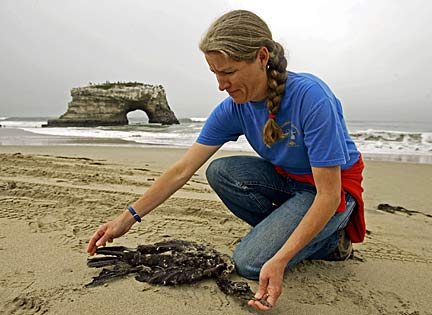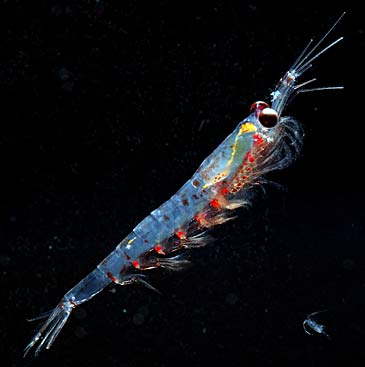
|
Ocean in crisis
Unusual weather patterns
have disrupted the marine
ecosystem along the West Coast
SAN FRANCISCO » Marine biologists are seeing mysterious and disturbing things along the Pacific Coast this year: higher water temperatures, plummeting catches of fish, lots of dead birds on the beaches and, perhaps most worrisome, very little plankton -- the tiny organisms that are a vital link in the ocean food chain.
Is this just one freak year? Or is this global warming?
Few scientists are willing to blame global warming, the theory that carbon dioxide and other man-made emissions are trapping heat in Earth's atmosphere and causing a worldwide rise in temperatures. Yet few are willing to rule it out.
"There are strange things happening, but we don't really understand how all the pieces fit together," said Jane Lubchenco, a zoologist and climate change expert at Oregon State University. "It's hard to say whether any single event is just an anomaly or a real indication of something serious happening."
Scientists say things could very well swing back to normal next year. But if the phenomenon proves to be long-lasting, the consequences could be serious for birds, fish and other wildlife.
This much is known: From California to British Columbia, unusual weather patterns have disrupted the marine ecosystem.
Normally, in the spring and summer, winds blow south along the Pacific Coast and push warmer surface waters away from shore. That allows colder, nutrient-rich water to well up from the bottom of the sea and feed microscopic plants called phytoplankton.

Pacific krill is shown above.
But this year, the winds have been unusually weak, failing to generate much upwelling and reducing the amount of phytoplankton.
Off Oregon, for example, the waters near the shore are 5 to 7 degrees warmer than normal and have yielded about one-fourth the usual amount of phytoplankton, said Bill Peterson, an oceanographer with the National Oceanic and Atmospheric Administration in Newport, Ore.
"The bottom has fallen out of the coastal food chain, and there's just not enough food out there," said Julia Parrish, a seabird ecologist at the University of Washington in Seattle.
Seabirds are clearly distressed. On the Farallon Islands west of San Francisco, researchers noted a steep decrease this spring in nesting cormorants and a 90 percent drop in Cassin's auklets -- the worst in more than 35 years of monitoring.
On Washington state's Tatoosh Island, common murres -- a species so sensitive to disruptions that scientists consider it a harbinger of ecological change -- started breeding nearly a month late. It was the longest delay in 15 years of monitoring.
Researchers have also reported a sharp increase in dead birds washing up in California, Oregon and Washington.
Along Monterey Bay in Central California, there are four times the usual number of dead seabirds, said Hannah Nevins, a scientist at Moss Landing Marine Laboratories.
"Basically, they're not finding enough food, and they use up the energy that's stored in their muscles, liver and body fat," Nevins said.
Fish appear to be feeling the effects, too. NOAA found a 20 to 30 percent drop in juvenile salmon off the coasts of Oregon, Washington and British Columbia in June and July, compared with the average over the previous six years.
Scientists have seen some of these strange happenings before during El Nino years, when higher water surface temperatures in the equatorial Pacific alter weather patterns worldwide. But the West Coast has not had El Nino conditions this year.
E-mail to City Desk
[News] [Business] [Features] [Sports] [Editorial] [Do It Electric!]
[Classified Ads] [Search] [Subscribe] [Info] [Letter to Editor]
[Feedback]
